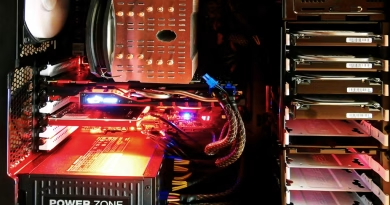The Economics of ‘Shrinkflation’ in Software: Are We Paying More for Fewer Features?
You’re already familiar with “shrinkflation” at the grocery store. The bag of chips has a little more air, the candy bar is a bit smaller, but the price remains the same. It’s a subtle way for companies to charge you more for less.
Now, this same frustrating phenomenon is taking over the digital world. A new form of “software shrinkflation” is creeping into the apps and services you use every day. Features that were once free are moving behind a new, more expensive subscription tier. Storage limits are getting smaller. And useful, simple functions are being replaced by clunky, “AI-powered” versions that work half as well.
It’s not your imagination. In many cases, we are now paying more money for software that is becoming actively worse.
How ‘Shrinkflation’ Manifests in Software
Unlike a smaller bag of chips, software shrinkflation can be harder to spot. Here are the most common forms it takes:
- Features Moving to a Higher Tier: This is the most blatant example. A feature that has been a standard part of your favorite productivity app for years—like advanced search or a specific type of export—is suddenly locked behind a new “Pro” or “Business” subscription that costs twice as much.
- Reduced Free Tier Limits: Free cloud storage accounts that once offered a generous 15GB are now being reduced to 5GB for new users. Free video conferencing services that allowed long calls are now capping them at 40 minutes, pushing you to upgrade.
- Replacing Functionality with “AI”: In the name of “innovation,” some companies are removing well-loved, reliable features and replacing them with AI-driven versions that are less precise and harder to control. A simple, effective photo editing tool might be replaced by an unpredictable “magic” AI editor that rarely gives you the result you want.
- The “Enshittification” Cycle: As famously described by author Cory Doctorow, platforms often follow a predictable cycle. First, they are good to their users to attract them. Then, they start to abuse their users to extract value for their business customers (advertisers). Finally, they abuse their business customers to claw back all the value for themselves. We are seeing this play out as once-beloved apps become cluttered with ads, sponsored content, and features designed to extract money rather than provide value.
The Driving Forces: Why Is This Happening?
This isn’t happening in a vacuum. It’s a result of major shifts in the tech economy.
- Market Saturation: For many software categories, the period of explosive growth is over. Companies can no longer rely on attracting millions of new users, so they are forced to find ways to extract more revenue from their existing ones.
- The Subscription Economy: The move from one-time purchases to recurring subscriptions has changed the incentives. The goal is to constantly push users up the “ladder” of subscription tiers.
- Pressure from Investors: After years of prioritizing growth, Wall Street and venture capitalists are now demanding profitability. Moving free features to paid tiers is one of the easiest ways for a company to boost its revenue.
The User Backlash
While companies see this as a necessary business strategy, they risk alienating their most loyal users. A growing number of consumers are pushing back, abandoning long-used services in favor of simpler, more transparent, and often open-source alternatives that respect the user.
Software shrinkflation is a subtle but powerful trend. It’s a reminder that in the world of software subscriptions, the features you depend on today are not guaranteed to be there tomorrow—at least, not at the same price.




